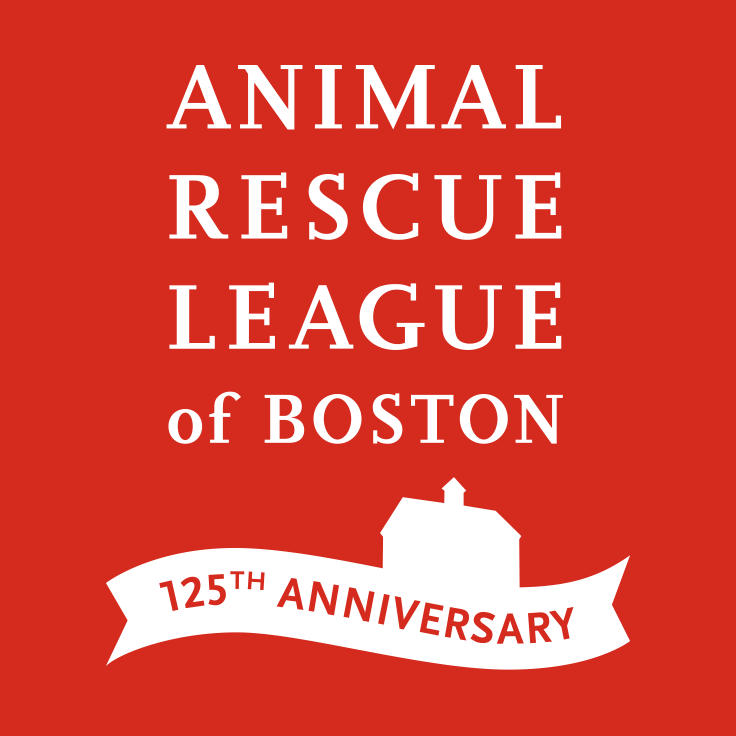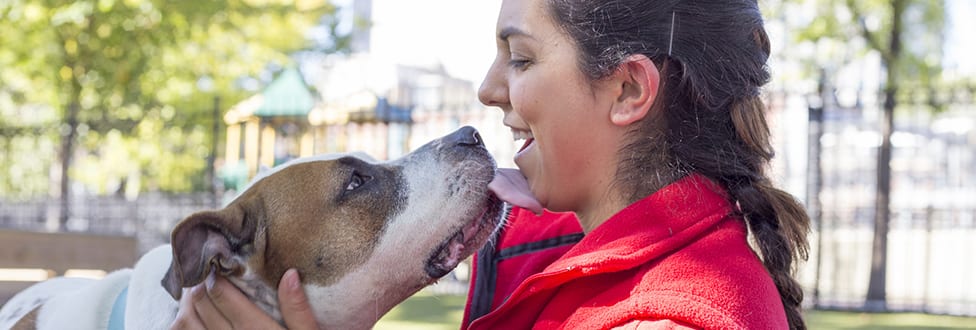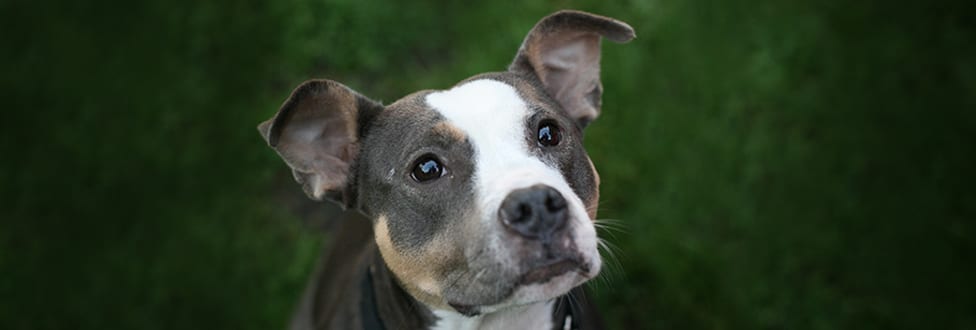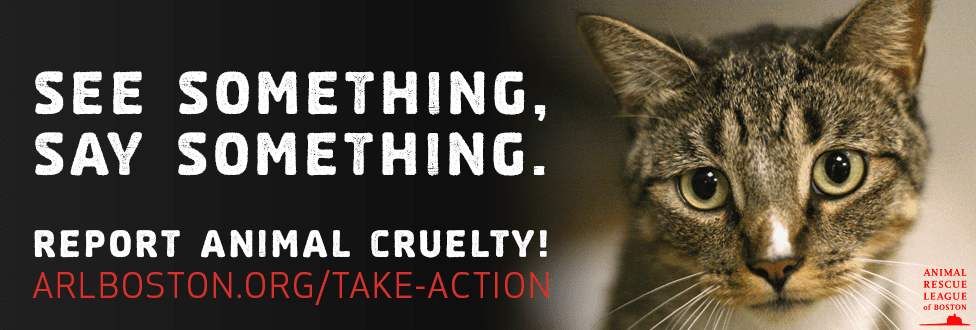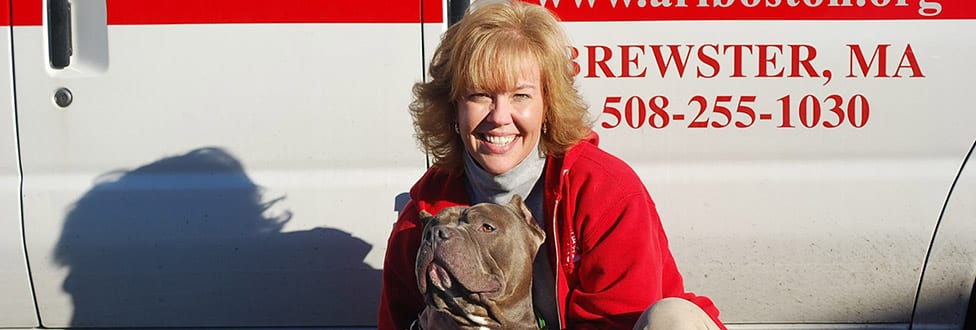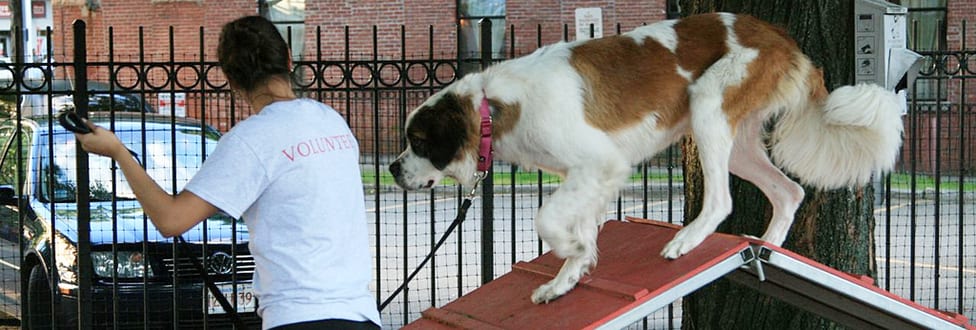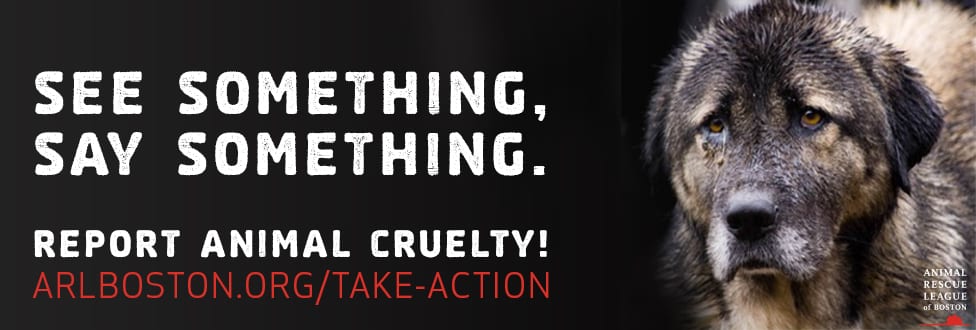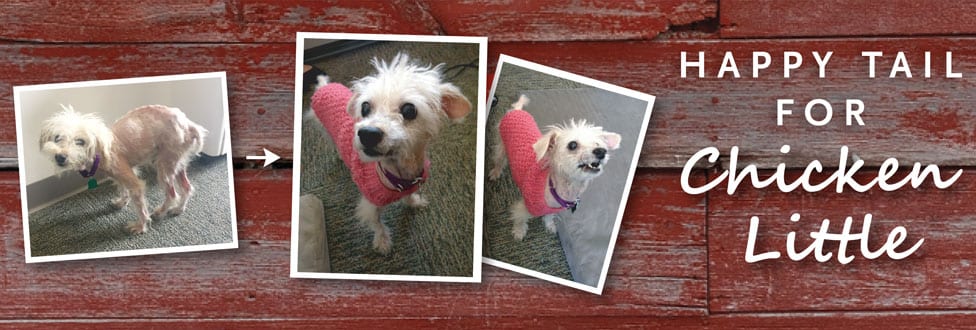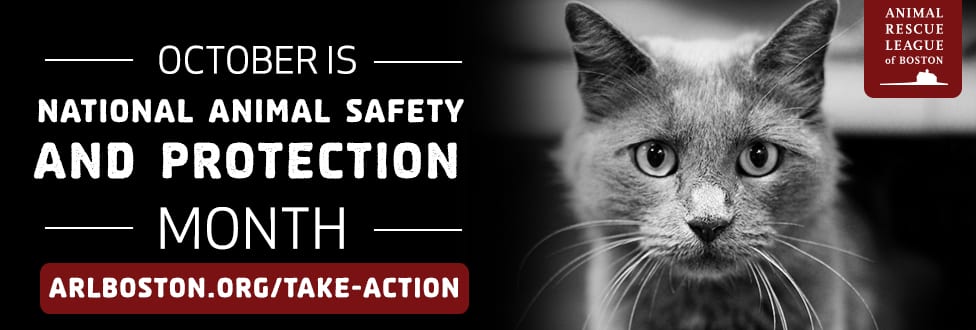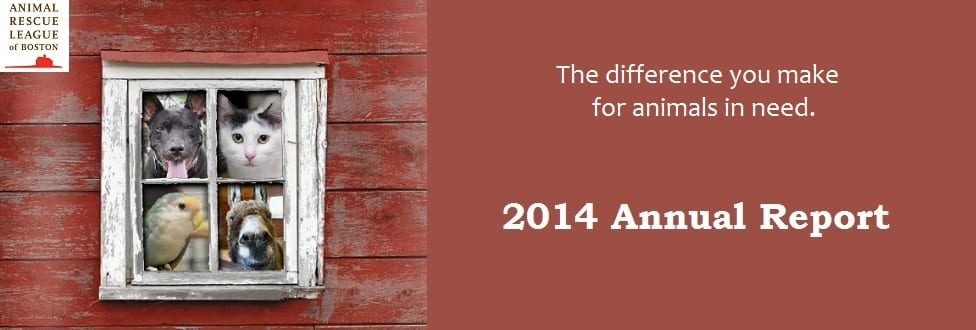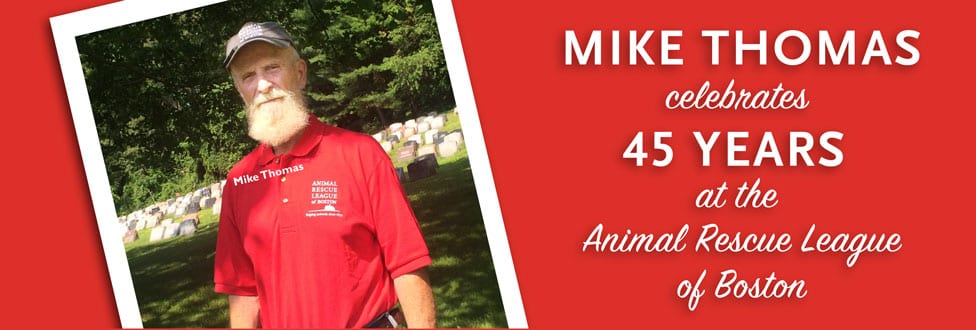They Call it Puppy Love
BVC shares 3 real health benefits of owning a dog
October is National Adopt-a-Dog Month and the Animal Rescue League of Boston (ARL) wants to remind you about all of the amazing benefits of adding a canine companion to your family. This week, we focus on the power of the human-animal bond and how it can positively impact YOUR physical and mental health!
When you adopt, you give an animal a chance at a better life. At the ARL, we have many incredible shelter dogs looking for a lifelong human companion (just like you!) to shower with loyalty and affection.
In addition to becoming your new best friend, however, a dog can give you even more than you bargained for- in a good way! Here are 3 real health benefits of adopting a shelter dog:
1. You’ll feel that “puppy love”… but, it’s not just love you’re feeling

Ready to feel that “puppy love” feeling? Stop by our Boston Shelter and fall in love with Pearce. Click on his photo to get to know him.
Did you know… that petting, smooching, or even looking at your pup can alter your biochemistry? It’s true! When a dog recognizes a familiar friendly person and that person makes eye contact with them, oxytocin (a.k.a. “the feel-good” hormone”) is released in BOTH the canine and human.
A surge of oxytocin can instantly decrease blood pressure and relieve stress and anxiety in both the dog and the person. This may help explain why the human-animal bond can be so powerful!
2. You’ll start to realize it’s all about life’s simple pleasures
As humans, we’re constantly on-the-go. We wear many hats throughout the day and feel the burden of the bills we need to pay, deadlines we need to meet, and the responsibility of managing an equally active family. We often envy the life of our dog whose only big decisions involve which toy (or shoe) to chew on and, of course, which section of the couch is comfiest.
While we don’t necessarily have the luxury of living a life parallel to our canine companions, we can learn an important lesson from them, which is: to appreciate the simple things in life.
3. You’ll lead a more active lifestyle… without even realizing it
Let’s face it: a dog’s energy is contagious. They’re always ready for playtime or a long walk and, although we may not be, we can’t resist that expectant look in their sweet eyes. Let their eagerness to stretch their legs motivate you to get moving too!
Set a daily walking or running routine for you and your pup to keep you both active and healthy. The more you exercise with you dog, the more they will expect it- and try to hold you to it!
Click here to search adoptable dogs at an ARL location.
LOVE YOUR PET… LOVE YOUR VET! Boston Veterinary Care is dedicated to keeping your pet happy and healthy.
A big THANK YOU to our Adopt-a-Dog month media sponsor CITYSIDE SUBARU and to our media partners WCVB TV 5 and MeTV for sharing the importance of dog adoptions with our community, and your viewers!
